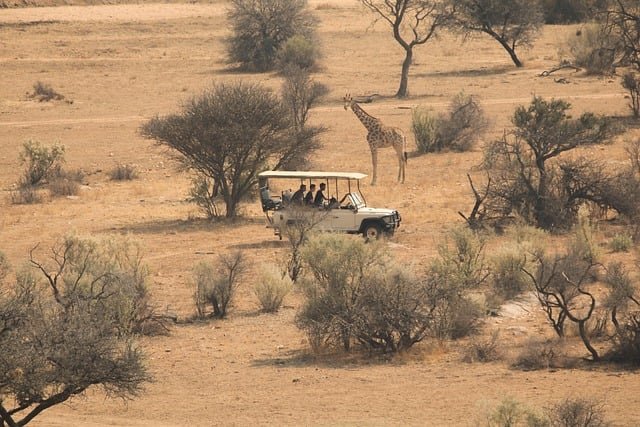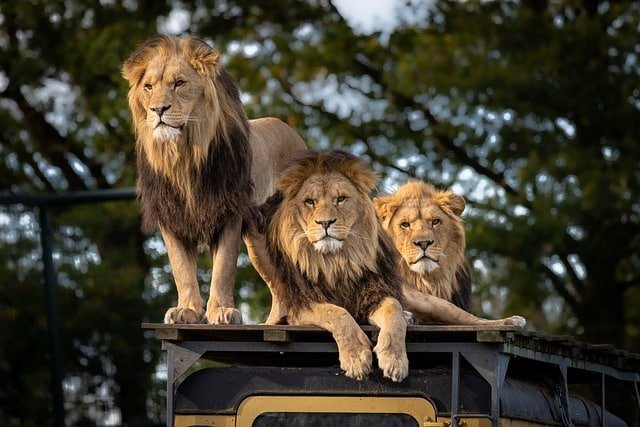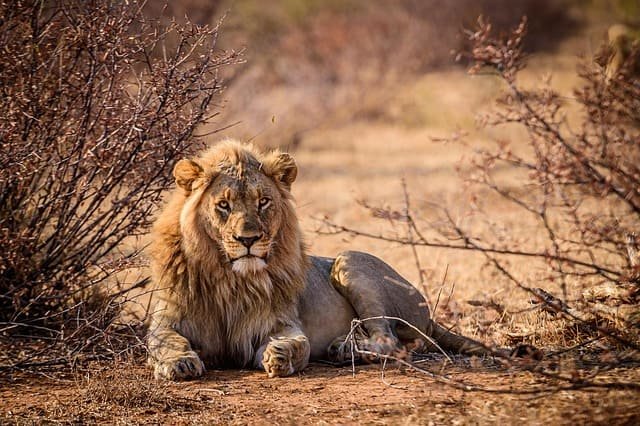Yes, walking safaris for beginners are not only possible—they’re unforgettable. You don’t need to be an expert hiker, an athlete, or a wildlife biologist. If you can walk, listen, and feel the ground under your feet, you’re ready. Walking safaris for beginners are safe, exciting, and designed to show you nature in the most raw and beautiful way. Whether you dream of seeing elephants quietly feeding, birds darting through tall grasses, or tracking footprints in soft earth—this guide will walk you through everything you need.
Let’s dive into how first-timers can experience walking safaris for beginners, what to expect, what to pack, and exactly where to go to make the most of it.

What is a Walking Safari?
A walking safari is a guided walk through wild landscapes, led by expert guides (and often an armed ranger) who help you explore wildlife on foot. Unlike being in a safari vehicle, you move slowly, quietly, and feel like you’re truly part of the wild.
Walking safaris for beginners are specially crafted to avoid danger, focus on learning, and allow you to experience smaller details—animal tracks, bird calls, smells of the bush—that you’d never notice in a jeep.
Where to Go for the Best Walking Safaris for Beginners
You can’t just pick any national park and go for a walk. Some places are far better suited for walking safaris for beginners, with safety, well-marked trails, and excellent guides in mind.
South Luangwa, Zambia
This is one of the birthplaces of walking safaris. Zambia’s South Luangwa offers beginner-friendly routes led by the best-trained guides on the continent. The terrain is flat, open, and easy to navigate.
Tarangire National Park, Tanzania
With scattered baobab trees and large herds of elephants, this park is a safe and scenic place to try walking safaris for beginners. Guides here know how to ease first-timers into the rhythm of the wild.
Kruger National Park (Private Reserves), South Africa
In areas like Timbavati and Sabi Sands, walking safaris for beginners are arranged with short distances, highly trained guides, and plenty of backup support. You’ll walk slow and stop often, perfect for those new to the experience.
Okavango Delta, Botswana
Many lodges in this unique wetland ecosystem offer walking safaris for beginners alongside canoe trips. The combination of water and walking makes for an unforgettable introduction to Africa.
What to Expect on Walking Safaris for Beginners
Your day usually starts early, just after sunrise. You’ll meet your guide, grab your hat and water, and head out on foot. Walking distances are short—often 2 to 5 kilometers—done at a slow pace with frequent stops.
You’re not chasing animals. You’re learning how to read nature. You’ll hear about plants that heal, dung that tells stories, and how to read paw prints in the dirt. Walking safaris for beginners are calm, not adrenaline-fueled.
How Long Do They Last?
Usually, walks last 2–3 hours in the morning. You return to camp for brunch and rest. Some lodges offer shorter afternoon walks too, sometimes ending with sundowners in the bush.

Safety on Walking Safaris for Beginners
This is the number one concern for new walkers—and it’s good to be cautious. But walking safaris for beginners are planned with your safety in mind. Here’s how:
- You’ll always be with a trained walking guide and usually an armed ranger.
- They know how to read animal behavior and avoid danger zones.
- Walks are timed to avoid heat and to stick to safer parts of the landscape.
- You’ll walk in a single file and be asked to stay quiet and calm.
No one is trying to get close to predators. You’re simply learning to walk in harmony with nature.
What to Wear and Pack
You don’t need fancy gear to enjoy walking safaris for beginners, but a few key items will make your experience smoother.
Clothing
- Neutral Colors: Khaki, olive, or brown so you blend in.
- Long Pants & Sleeves: Protection from sun and bugs.
- Comfortable Walking Shoes: Lightweight hiking shoes or trail runners.
- Wide-brim Hat: Crucial for the African sun.
Must-Bring Items
- Refillable water bottle
- Sunscreen and insect repellent
- Binoculars for birdwatching
- A light backpack
- Small camera or phone with silent shutter mode
How to Choose a Good Walking Safari Guide
The guide can make or break your experience. Walking safaris for beginners should always be done with a guide who:
- Is officially licensed and experienced
- Has first-aid training
- Understands the local ecosystem deeply
- Speaks your language clearly
Ask questions before booking. Read reviews. A great guide doesn’t just keep you safe—they open your eyes to the magic of the bush.
Best Time of Year for Walking Safaris for Beginners
Dry season is the best for walking safaris. Trails are clear, vegetation is low, and animals come to water sources, making them easier to see.

Timing by Region:
- Southern Africa (Zambia, Botswana, South Africa): May to October
- East Africa (Tanzania, Kenya): June to October
Avoid the wet season if you’re new—muddy trails and thick vegetation can make it hard to see and walk.
How to Mentally Prepare
Yes, walking safaris for beginners are easy—but they require a shift in mindset. You’re not rushing, you’re not guaranteed a lion sighting, you’re there to feel the land.
Quick Tips:
- Stay quiet. Animals are sensitive to noise.
- Don’t expect constant action. Some of the best moments are in the silence.
- Ask questions. Guides love curious minds.
- Let go of expectations. You’re there to observe, not chase.
Daily Routine on a Walking Safari
To help you visualize it, here’s a typical beginner’s safari day:
- 5:30 AM: Wake-up call with coffee/tea
- 6:00 AM: Start walking safari with guide
- 8:30 AM: Return for brunch at camp
- 1:00 PM: Optional short educational talk or rest
- 4:00 PM: Optional second walk or a sundowner drive
- 7:00 PM: Dinner under the stars
This rhythm balances activity and rest. It’s ideal for newcomers.
Walking Safaris for Beginners on a Budget
It’s a myth that walking safaris are only for luxury travelers. Here’s how to do it without breaking the bank:
Join Group Walks
Many national parks like Kruger or Tarangire offer walking safaris for beginners as part of shared packages, reducing costs.
Choose Community-Owned Lodges
Places run by local communities often offer more affordable and authentic walking experiences.
Pick Shoulder Season
Travel just before or after the high season. You’ll get better prices but still decent weather.
Skip the Frills
You don’t need a five-star lodge. Basic bush camps often offer the best wildlife access at the lowest cost.
Top Lodges for Walking Safaris for Beginners
Here are a few camps known for catering to beginners:
- Tafika Camp, Zambia – Small group walks, expert guides, low-impact experiences.
- Rhino Walking Safaris, Kruger – Great for newcomers, shorter distances, and amazing animal sightings.
- Chikoko Trails, Zambia – No vehicles at all—just walking. Ideal for slow and simple exploration.
- Ol Pejeta Conservancy, Kenya – Offers walking safaris for beginners alongside rhino conservation.
Why Walking Changes Everything
You won’t realize it until you try it. Once you step out of the vehicle and feel the heat of the ground, the buzz of cicadas, the rhythm of your own breath—it all becomes more real. Walking safaris for beginners offer something vehicles never can: intimacy.
You’ll remember the crunch of dry leaves, the chill of dawn air, the thrill of seeing giraffes at eye level. These are the things that stick.
Frequently Asked Questions
Are walking safaris safe for children?
Most walking safaris for beginners have age limits, usually 12 years and above. Always check with your lodge. Some offer short nature walks specifically for kids.
Do I need to be fit?
No. You need to be able to walk 3–5 km at a slow pace. No running, no climbing, just calm walking.
Will I see big animals?
Sometimes yes, sometimes no. Walking safaris focus on the whole ecosystem. You’ll notice birds, bugs, trees, smells, and signs of animals even if they’re not in view.
What if I get scared?
It’s natural to be nervous. But with a calm, trained guide and beginner-friendly routes, most people end up feeling more excited than afraid.
Final Tips Before You Go
- Start with one-day walks before committing to a multi-day trip.
- Listen more than you talk. You’ll learn more from nature’s sounds than your own voice.
- Respect the bush. You’re a guest in the animals’ home.
- Journal the experience. The small details will become big memories later.
Conclusion: Your First Steps Into the Wild
You don’t need years of experience or nerves of steel to enjoy walking safaris for beginners. You just need curiosity and a willingness to slow down. This is not about rushing from sight to sight—it’s about being in nature, not just looking at it.
If you’ve ever dreamed of being part of the wild, not just a tourist with a camera, walking safaris for beginners are your door in. Once you’ve done it, you’ll never go back to watching from behind a windshield.
So pack your boots, open your eyes, and step into a different kind of safari—the one where you walk softly, feel deeply, and come home changed.
People also ask: What country is best to see elephants in Africa?

